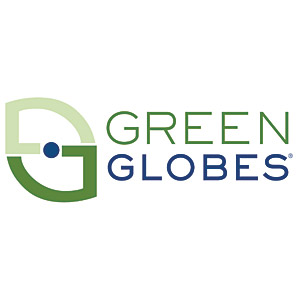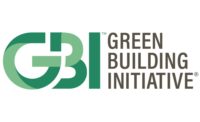The Green Building Initiative began work on the ANSI/GBI 01-2010: Green Building Assessment Protocol for Commercial Buildings (aka Green Globes) almost 10 years ago. Since then, there have been many new developments in green building.
In its latest assessment of green building rating systems, the U.S. General Services Administration gave Green Globes the highest rating, superior to LEED. And Green Globes is only getting better, having just begun it’s required ANSI Standard Periodic Maintenance process and will be available for use in 2015.
The hard work was done by the original Green Globes committee, resulting in its superior ranking among all other rating systems, has not diminished. The Periodic Maintenance committee has redoubled its efforts to update and improve Green Globes which will ensure its elite status as the best green building rating system for years to come.
Predicted Vs. Actual Performance
The list of academic studies calling attention to huge gaps between predicted green building improvement and actual performance continues to grow. A recent study titled “How Much Energy Do Building Energy Codes Really Save? Evidence from California,” by Arik Levinson of the National Bureau of Economic Research, examines how homes in California have performed since the enactment of the nation’s first building energy codes in 1978. It was predicted that the enactment of these energy codes would reduce residential energy use and associated pollution by 80 percent. After a detailed analysis of tens of thousands of residential energy bills in the state of California, Levinson concludes that, “there is no evidence that homes constructed since California instituted its building energy codes use less electricity today than homes built before the codes came into effect.”
Why aren’t prescriptive green building requirements resulting in predicted performance? This is one question that the Green Globes Technical Committee is asking, with an eye toward improvements to the rating system that will result in achievement of predicted performance. In this article, I will offer readers a glimpse into improvements to Green Globes being considered by the committee to solve this problem.
Indoor Air Quality: Most green building rating systems rely on limiting products containing high levels of EPA regulated VOCs as a means to better IAQ. While this may be helpful, it is not a forgone conclusion that following these prescriptive requirements results in good IAQ. In fact, doing so may do nothing to improve IAQ.
A colleague of mine, a Certified Industrial Hygienist in Seattle that makes his living testing buildings for IAQ issues, gave a recent example of this. He was hired to test the IAQ in a completed midrise office building pursuing a LEED Gold rating. The five story 50,000-square-foot building was designed to be “naturally” ventilated (read: operable windows). The project team followed all of the LEED prescriptive IAQ measures and were confident that the post-construction/pre-occupancy IAQ testing would pass with flying colors. But it didn’t. The CIH noticed upon entering the building that the air was funky and that the IAQ test would probably indicate poor IAQ. He was correct. Lack of adequate ventilation kills IAQ—forget about VOCs in materials. And this isn’t an isolated example. Of the buildings he has tested, all of them pursuing LEED certification, 25 percent do not pass the test for good IAQ.
The new Green Globes will greatly improve IAQ potential by incentivizing project teams to make ventilation effectiveness the primary goal, followed by emissions testing of interior building products, finishes and furniture, and introducing more extensive IAQ measures during construction. To prove good IAQ, Green Globes will also include a solid IAQ testing procedure to measure and verify that good IAQ has been achieved.
Life Cycle Assessment:A feature of the original Green Globes, the new version of Green Globes will introduce major improvements to what was previously offered for building shell and core Life Cycle Assessment. The original requirement was tied to a free, web-based tool produced by the Athena Institute called the Impact Estimator for Buildings. The latest draft instead requires that project teams comply with ASTM E 2921 Standard Practice for Minimum Criteria for Comparing Whole Building Life Cycle Assessments for Use with Building Codes and Rating Systems. The software tools that a team might use in calculating shell and core LCA is no longer limited to the Athena tool referenced in the original Green Globes but allows use of any tool that meets the ASTM requirement.
Another significant proposed change to this credit is to allow design teams to consider operating energy impacts when calculating shell and core LCA. This important addition allows teams to compare performance of the building using different amounts and types of thermal insulation, for example, to arrive at a better performing building based on energy consumption, even though LCA for the materials used in getting better energy performance might show greater impacts than materials that make the building consume more energy.
Commissioning: The Technical Committee has had numerous and lengthy discussions about commissioning parts of the building beyond HVAC systems, raising the bar to a more comprehensive whole-building approach, in order to more effectively close the gap between predicted and actual building performance. The committee has tasked itself with identifying, for every credit proposed, a complementary commissioning component that would validate predicted rating system performance. Some examples being considered include:
- Thermal comfort: Simple, inexpensive field testing for acoustical performance of walls, floor/ceilings and door assemblies.
- Energy use: Whole building air barrier testing.
- Building envelope: On-site water penetration testing of key envelope assemblies, including static pressure testing of window and fenestration assemblies and electronic leak detection of roofing and waterproofing assemblies.
- Daylighting: On-site measurements of daylighting effectiveness, glare, and quality of light.
Conclusion
The new Green Globes Technical Committee has been hard at work making improvements to one of the best green building rating systems produced. Being an ANSI developed standard, the process is completely transparent, allowing for public participation on all committee and subcommittee calls, which has resulted in a much better draft. It is anticipated that the first draft for public comment will be released no later than the end of the first quarter of 2015. I encourage each and every reader to go to the Green Building Institute Web site for more information and to get involved in the process—grab a copy of the standard when available and provide your thoughtful comments back to the committee. We think we have done a great job so far but we need your help in getting as close to perfect as we can, and welcome all feedback.
The Green Building Initiative began work on the ANSI/GBI 01-2010: Green Building Assessment Protocol for Commercial Buildings (aka Green Globes) almost 10 years ago. Since then, there have been many new developments in green building.
In its latest assessment of green building rating systems, the U.S. General Services Administration gave Green Globes the highest rating, superior to LEED. And Green Globes is only getting better, having just begun it’s required ANSI Standard Periodic Maintenance process and will be available for use in 2015.
The hard work was done by the original Green Globes committee, resulting in its superior ranking among all other rating systems, has not diminished. The Periodic Maintenance committee has redoubled its efforts to update and improve Green Globes which will ensure its elite status as the best green building rating system for years to come.
Predicted Vs. Actual Performance
The list of academic studies calling attention to huge gaps between predicted green building improvement and actual performance continues to grow. A recent study titled “How Much Energy Do Building Energy Codes Really Save? Evidence from California,” by Arik Levinson of the National Bureau of Economic Research, examines how homes in California have performed since the enactment of the nation’s first building energy codes in 1978. It was predicted that the enactment of these energy codes would reduce residential energy use and associated pollution by 80 percent. After a detailed analysis of tens of thousands of residential energy bills in the state of California, Levinson concludes that, “there is no evidence that homes constructed since California instituted its building energy codes use less electricity today than homes built before the codes came into effect.”
Why aren’t prescriptive green building requirements resulting in predicted performance? This is one question that the Green Globes Technical Committee is asking, with an eye toward improvements to the rating system that will result in achievement of predicted performance. In this article, I will offer readers a glimpse into improvements to Green Globes being considered by the committee to solve this problem.
Indoor Air Quality: Most green building rating systems rely on limiting products containing high levels of EPA regulated VOCs as a means to better IAQ. While this may be helpful, it is not a forgone conclusion that following these prescriptive requirements results in good IAQ. In fact, doing so may do nothing to improve IAQ.
A colleague of mine, a Certified Industrial Hygienist in Seattle that makes his living testing buildings for IAQ issues, gave a recent example of this. He was hired to test the IAQ in a completed midrise office building pursuing a LEED Gold rating. The five story 50,000-square-foot building was designed to be “naturally” ventilated (read: operable windows). The project team followed all of the LEED prescriptive IAQ measures and were confident that the post-construction/pre-occupancy IAQ testing would pass with flying colors. But it didn’t. The CIH noticed upon entering the building that the air was funky and that the IAQ test would probably indicate poor IAQ. He was correct. Lack of adequate ventilation kills IAQ—forget about VOCs in materials. And this isn’t an isolated example. Of the buildings he has tested, all of them pursuing LEED certification, 25 percent do not pass the test for good IAQ.
The new Green Globes will greatly improve IAQ potential by incentivizing project teams to make ventilation effectiveness the primary goal, followed by emissions testing of interior building products, finishes and furniture, and introducing more extensive IAQ measures during construction. To prove good IAQ, Green Globes will also include a solid IAQ testing procedure to measure and verify that good IAQ has been achieved.
Life Cycle Assessment: A feature of the original Green Globes, the new version of Green Globes will introduce major improvements to what was previously offered for building shell and core Life Cycle Assessment. The original requirement was tied to a free, web-based tool produced by the Athena Institute called the Impact Estimator for Buildings. The latest draft instead requires that project teams comply with ASTM E 2921 Standard Practice for Minimum Criteria for Comparing Whole Building Life Cycle Assessments for Use with Building Codes and Rating Systems. The software tools that a team might use in calculating shell and core LCA is no longer limited to the Athena tool referenced in the original Green Globes but allows use of any tool that meets the ASTM requirement.
Another significant proposed change to this credit is to allow design teams to consider operating energy impacts when calculating shell and core LCA. This important addition allows teams to compare performance of the building using different amounts and types of thermal insulation, for example, to arrive at a better performing building based on energy consumption, even though LCA for the materials used in getting better energy performance might show greater impacts than materials that make the building consume more energy.
Commissioning: The Technical Committee has had numerous and lengthy discussions about commissioning parts of the building beyond HVAC systems, raising the bar to a more comprehensive whole-building approach, in order to more effectively close the gap between predicted and actual building performance. The committee has tasked itself with identifying, for every credit proposed, a complementary commissioning component that would validate predicted rating system performance. Some examples being considered include:
Thermal comfort: Simple, inexpensive field testing for acoustical performance of walls, floor/ceilings and door assemblies.
Energy use: Whole building air barrier testing.
Building envelope: On-site water penetration testing of key envelope assemblies, including static pressure testing of window and fenestration assemblies and electronic leak detection of roofing and waterproofing assemblies.
Daylighting: On-site measurements of daylighting effectiveness, glare, and quality of light.
Conclusion
The new Green Globes Technical Committee has been hard at work making improvements to one of the best green building rating systems produced. Being an ANSI developed standard, the process is completely transparent, allowing for public participation on all committee and subcommittee calls, which has resulted in a much better draft. It is anticipated that the first draft for public comment will be released no later than the end of the first quarter of 2015. I encourage each and every reader to go to the Green Building Institute Web site for more information and to get involved in the process—grab a copy of the standard when available and provide your thoughtful comments back to the committee. We think we have done a great job so far but we need your help in getting as close to perfect as we can, and welcome all feedback.



Report Abusive Comment